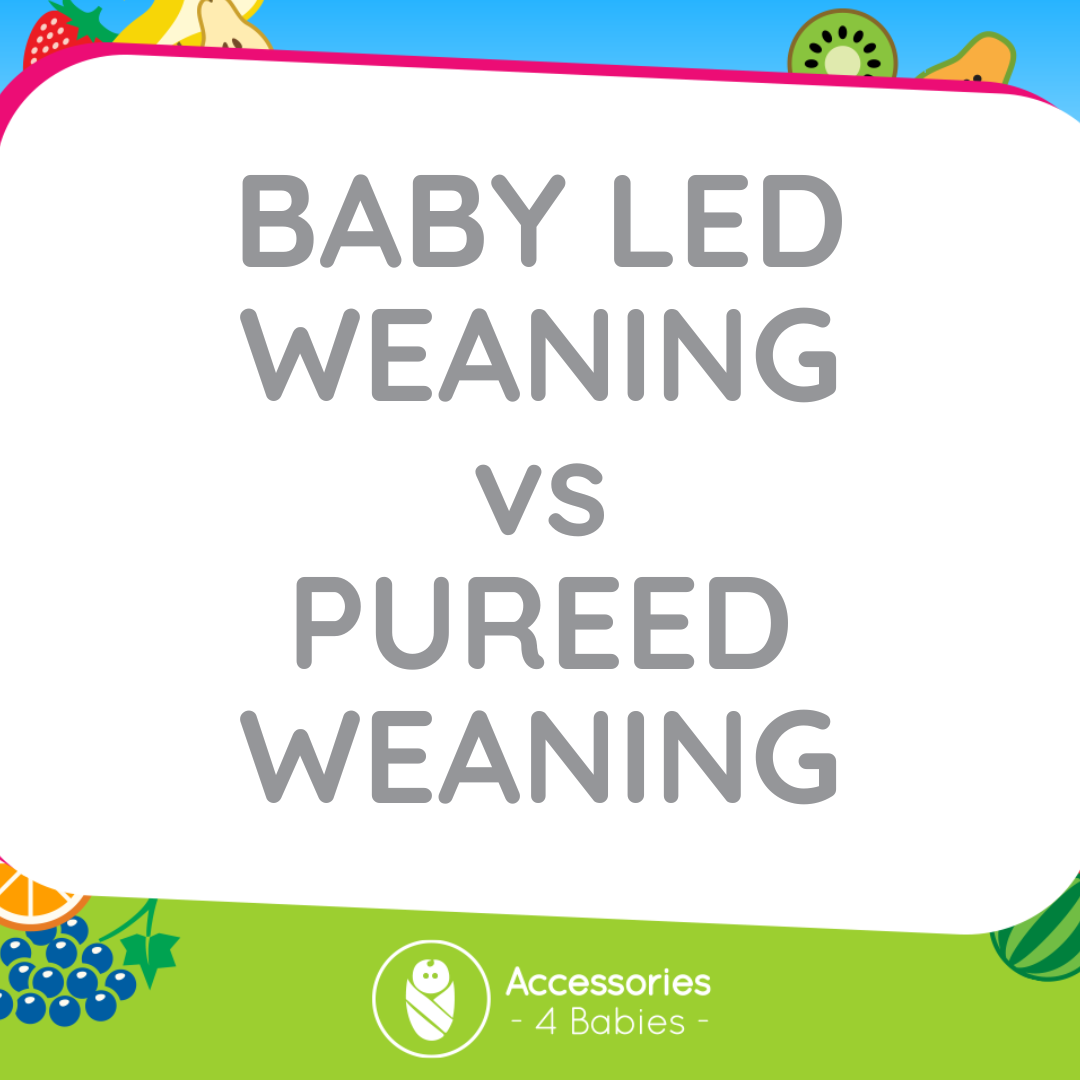
Baby Led Weaning Versus Pureed Weaning
Baby-led weaning (BLW) and pureed weaning are two different approaches to introducing solid foods to infants. Each has its benefits and considerations. Here’s a comparison of both:
Baby-Led Weaning (BLW):
Approach: Baby-led weaning involves letting your baby feed themselves from the beginning, offering age-appropriate finger foods in their whole form.
Benefits:
- Development of Motor Skills: BLW encourages babies to grasp, pick up, and chew food, helping develop fine motor skills.
- Exploration: Babies get to explore different textures, colors, and flavors independently, fostering curiosity.
- Self-Regulation: BLW allows babies to self-regulate their intake, potentially promoting better appetite control and preventing overeating.
- Family Meals: BLW promotes family meals as babies can join in during regular mealtimes.
Considerations:
- Choking Risk: Parents need to be vigilant about choosing appropriate finger foods and monitoring their baby during meals to prevent choking.
- Mess: BLW can be messier as babies explore and handle food.
- Variability: The pace at which babies consume food can vary, which might cause anxiety for some parents.
Pureed Weaning:
Approach: Pureed weaning involves offering babies smooth and pureed foods using a spoon.
Benefits:
- Safety: Pureed foods have a lower choking risk compared to solid finger foods.
- Controlled Introduction: Parents have more control over the texture and portion size of the food being introduced.
- Nutrition: Purees can be easily fortified with breast milk or formula to ensure adequate nutrition.
Considerations:
- Delayed Motor Skills: Some argue that purees may not promote the development of chewing and self-feeding skills as effectively as BLW.
- Less Independence: Babies may have less autonomy in choosing and exploring foods.
- Transition to Textures: Babies introduced to purees might need to transition to lumpier textures later, which can be challenging.
Ultimately, the choice between baby-led weaning and pureed weaning depends on your baby’s developmental readiness, your comfort level, and your family’s preferences. Some parents even choose a combination of both methods, starting with purees and gradually introducing finger foods. It’s important to prioritize your baby’s safety, offer a variety of nutritious foods, and create positive mealtime experiences. Consult with your pediatrician before starting any weaning approach to ensure it’s suitable for your baby.

Stockists





